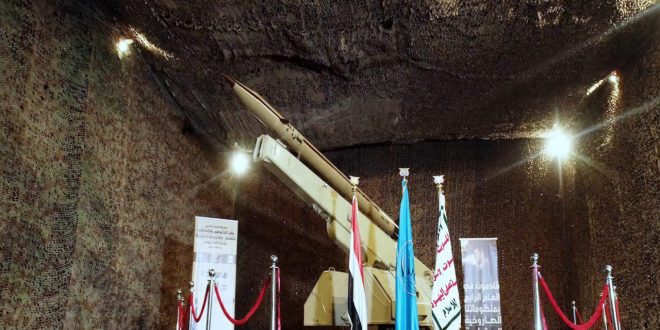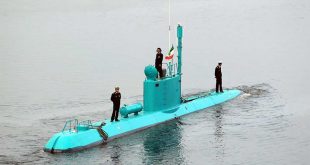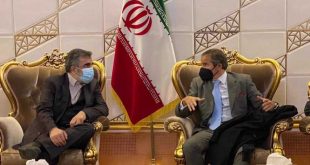After more than three years of the US-Saudi-UAE aggression on Yemen, the curse of Yemeni ballistic missiles continues to haunt the enemies. They stand helpless trying to destroy or limit the missiles launch and development capabilities. Even US most advanced Patriot missile defense system was neutralized and no longer effective in the face of the updated Yemeni ballistic missiles. In turn, such missiles has changed the military equation, and made them stand at the top of the list of the enemies targeting list.
.jpg)
The leadership promised on the anniversary of war against Yemen to step-up use of long-range weaponry and recruit more fighters in a bid to confront the US-Saudi war effort against Yemen. “In the fourth year of the war, we will use more developed and far-reaching missile systems, which will penetrate all American and non-American air defense systems to target Saudi Arabia,” Sayyed Abdulmalik Al-Houthi said.
President Saleh Al-Sammad announced shortly before he was assassinated by a US-Saudi airstrike that “from righton, we will launch missiles every day and Saudi Arabia will not be safe from Yemeni missiles, no matter how they plan their defense systems.” For his part, Brigadier-General Sharaf Luqman echoed Al-Sammad, stating “rocketry operations will continue as long as the aggression continues to commit crimes against the Yemeni people.”
Less than three months as the Saudi war on Yemen began, domestic missile production was operational and on June 6, 2015, the Rocketry Force of the Yemeni Army and Popular Committees launched its first homegrown ballistic missile, a Scud with a range of more than 800 km, toward the King Khalid Bin Abdulaziz Airport in southern Saudi Arabia.
Three months later, the Yemeni Air Force launched its newly created “Tochka” ballistic missile against a Saudi military base in Safer, eastern Yemen, causing a huge blast and inflicting numerous casualties on the aggression troops. Dozens of Emirati, Saudi, Bahraini troops, as well as dozens of Saudi-mercenaries, were killed in the attack.
On September 7, 2016, a new ballistic missile dubbed the “Borkan H-1” was unveiled. The Borkan is a modified Scud, and was used to strike a military base near Riyadh, more than 800 km from Yemen’s northern border. Later, the Yemeni Air Force unveiled the “Borkan H-2”, which was able to evade US Patriot missiles defenses and land near the King Khalid International Airport near Riyadh.

In February 2017, the Rocketry Force unveiled four domestically manufactured drones, Qasef-1, Hudhud-1, Raqib, and Rased, all of which perform a variety of tasks, including aerial monitoring, battlefield observation, and geophysical surveying.
Sayyed Abdulmalik Al-Houthi has vowed in September, 2017 to fire more missiles into Saudi Arabia unless it stops bombing the country. “We could target Saudi oil tankers and we could do anything,” he said. Adding that Yemen’s ballistic missiles were capable of reaching the United Arab Emirates’ capital of Abu Dhabi and anywhere inside Saudi Arabia.
“The UAE is from now on is not a safe country and under the possibility of missile strikes at any time,” he said, warning countries and companies with investments in the UAE that this country is no longer safe after its aggression on Yemen. Later in December 3, 2017, the Yemeni Air Force had successfully fired a guided missile, which has a range of 1600 km, at the Baraka nuclear power plant in Abu Dhabi.
The Yemeni Army and Popular Committees have also modified Soviet missiles for use in the war, including Qaher 2, which is a domestically modified Soviet SA-2 missile that boasts a range of over 300 km. This Qaher 2, which contains a 200-to-400 kg warhead, struck a military base located 966 km south of Riyadh on April 1, 2018, making it the very first Yemeni rocket to reach such a distance. The Rocketry Force also possess short-range tactical missiles, including the domestically manufactured “al-Najim al-Thaqib,” which is 3m long and has a range of 45 km and holds a 50 kg payload. Its second iteration, al-Najim al-Thaqib 2, is 5m long and has a range of 75 km with a 75 kg payload. Both versions have fixed stabilization grid fins and are launched from rails rather than tubes.

On April 11, the Yemeni Army and Popular Committees launched a major attack on the Saudi army. The attack began with artillery shelling directly striking ranks of the Saudi military and was followed with a barrage of Borkan 2 long-range ballistic missiles against the Saudi Defense Ministry building in Riyadh, an Aramco oil facility in Jizan, as well as other undisclosed targets inside Saudi territory.
Although Saudi Arabia claims its American-made Patriot missile defense system intercepts most of Yemen’s ballistic missiles, a large crop of videos and photos circulating on social media, as well as assessments by military analysts suggest otherwise.
A barrage of Yemeni missiles was also launched against Saudi targets on the third anniversary of the US-Saudi aggression, weeks before the attacks on Riyadh and Jizan. Yemen’s Rocketry Force also struck King Khalid Bin Abdulaziz International Airport in southern Saudi Arabia a total of three times with Borkan missiles — the most recent strike taking place on March 26.
On July 3, the Rocketry Force unveiled underground ballistic missile platforms for the first time. The new more developed missiles are a proof of Yemeni missile power and their strength in missile operations.
In its first unveiling of domestically made precision smart weapons, the Rocketry Force of the Army and Popular Committees on Saturday revealed a locally-made new smart short-range ballistic missile system, Badr P-1, after the success of several tests, the latest of which the missile targeted Sudanese recently constructed military camp in West Coast. The Rocketry Force said in a statement that the short-range ballistic missile, Badr P-1 has 3m target range accuracy, developed from Bader 1, and works with solid fuel. The Rocketry Force confirmed that, in 2018, Yemen has accurate missile capabilities and other systems will be revealed soon.
A spokesman for the Yemeni Army and Popular Committees Brigadier Yahya Sari on Sunday reviewed in a briefing the experiences of the missile force before the unveiling of the Badr P-1 missile, as well as military operations during the past week. He added that the smart missile Badr P-1 is one of the boast of the Yemeni military industry with quality specifications and ability to hit the target accurately . He also said that the process of manufacturing and developing came with 100 percent Yemeni expertise.
Developing missiles system comes as a deterrent after nearly four years of persistent attacks on civilians. Aggression warplanes routinely target civilian gatherings and infrastructure such as weddings, funerals, crowded weekend markets, and homes.
The Legal Center for Rights and Developments in Yemen, in a statement released on October 15, announced that the ongoing US-Saudi-UAE military campaign against the impoverished and conflict-plagued Arab country has resulted in the death of 15,185 civilians, including 3,527 children and 2,277 women. A total of 23,822 civilians, among them 3,526 children and 2,587 women, have also sustained injuries, and are currently suffering from the lack of medicine, medical supplies and poor treatment due to the crippling Saudi siege.
 WILAYAH NEWS VOICE OF THE GLOBAL AWAKENING
WILAYAH NEWS VOICE OF THE GLOBAL AWAKENING






